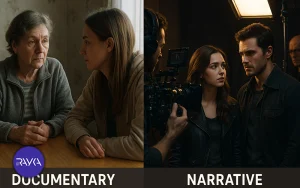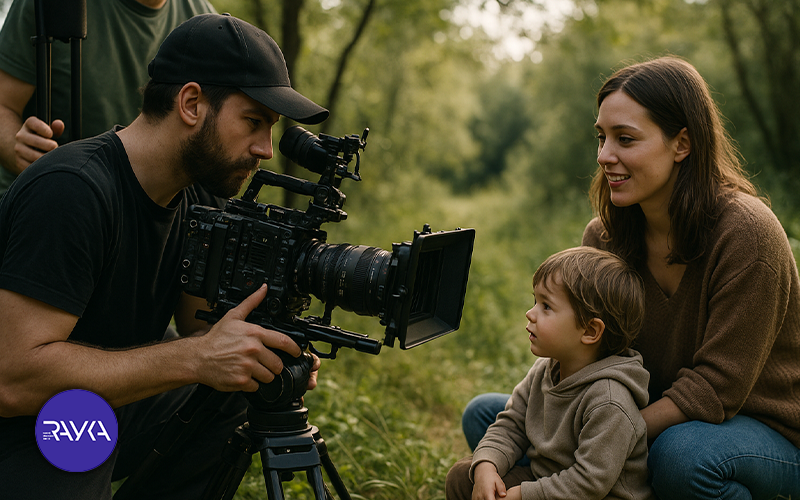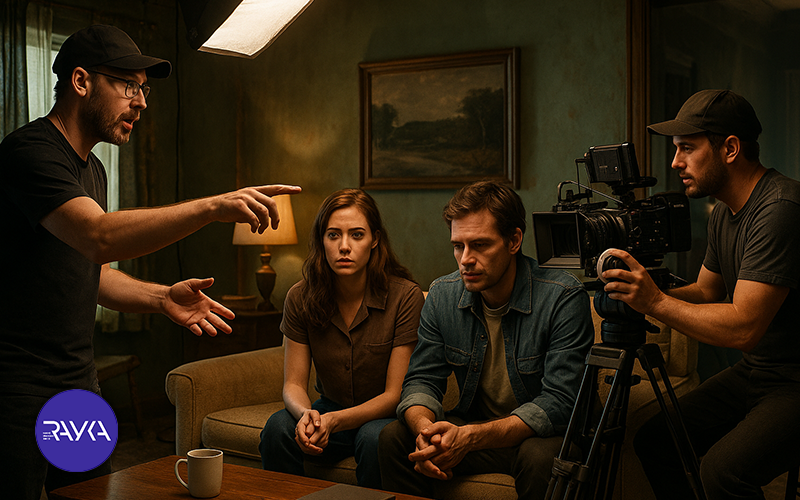
Documentary and fiction films are the two main branches of cinema, each with its own unique style of storytelling, purpose, and impact on the audience. Understanding their differences helps us gain a deeper insight into the concept of “reality and imagination in cinema.”
In the world of cinema, everything moves between two major poles: reality and fiction. A documentary aims to present the truth, while a fiction film is built upon an imaginary narrative. Grasping the difference between these two forms is essential not only for film enthusiasts and students of cinema but also for general audiences — because each type of film offers a distinct way of influencing human emotions and thoughts.
In this article, we’ll take a closer, easy-to-understand look at both genres and explore their unique characteristics to better understand what sets them apart.
A documentary film is a work that presents reality without imagination or a pre-written script, aiming to inform, raise awareness, and record the truth.
A documentary film is a form of filmmaking based on real events. In documentaries, the subjects are real, and the narrative is drawn directly from real life and true happenings. Instead of creating an imaginary world, the filmmaker tries to capture reality as it is ; encouraging the viewer to think, reflect, or gain awareness.
The purpose of documentary filmmaking can be educational, social, historical, or environmental. Many documentaries explore a specific topic through visuals, interviews, and real-life storytelling. Unlike fiction films, documentaries usually don’t follow a fixed script; their narrative can evolve naturally during production as new truths or perspectives emerge.
Before discussing the differences, it’s helpful to take a closer look at what defines a documentary film. Each of these characteristics explains why documentaries feel so authentic, powerful, and distinct from fiction films. The main features of a documentary film include:

A fiction film is a cinematic work that tells an imaginary or re-created version of reality using a screenplay and professional actors.
Fiction films are among the most well-known types of movies, created through imagination, carefully written scripts, and precise direction. In this type of film, everything is planned in advance — from dialogues and set design to locations and, most importantly, the storyline and theme.
The filmmaker’s goal is to craft a coherent story that engages the audience’s emotions, imagination, and excitement, allowing viewers to experience a world shaped by creativity rather than reality.
Fiction films can be made in a wide variety of genres; from drama and romance to action, science fiction, or horror. Their main goal is entertainment and storytelling, rather than documenting reality.
These films usually feature well-developed characters, carefully written dialogues, and professionally designed scenes, all crafted to draw the audience into a captivating narrative world.
A fiction film is created through a detailed script, precise direction, and the use of professional actors to build an imaginary yet believable world for the audience.
Fiction films are made with careful planning and creative control. Everything; from the storyline to the actors’ emotions; is designed in advance. The director’s mission is to take the viewer on an emotional journey and immerse them in a vivid, imaginative world. Here are the main characteristics of fiction films:
The main difference between a documentary and a fiction film lies in the source of the narrative and the purpose of production; a documentary captures reality, while a fiction film follows imagination and a written script.
Now that we’ve explored the characteristics of each type, it’s time for a direct comparison. Understanding the difference between documentary and fiction films helps audiences recognize why each evokes distinct feelings, experiences, and messages; and also when each format is most effective.
Moreover, knowing these differences is essential for filmmakers who aim to follow professional storytelling principles. The table below highlights the key distinctions:
| Aspect | Documentary Film | Fiction Film |
|---|---|---|
| Source of Narrative | Reality and real subjects | Imagination and screenplay |
| Purpose | Awareness, education, documentation | Entertainment, emotional impact |
| Subject / Characters | Real people or real topics | Professional actors and fictional characters |
| Structure | Flexible, possibly non-linear | Planned and linear or script-based |
| Director’s Control | Observer and selector, less controllable | Full control over narrative and details |
| Visual Tools | Interviews, archives, real footage | Artificial locations, set design, and visual effects |
| Production Limitations | Dependent on reality, unpredictable | Fully planned and controllable |
| Cost | Usually lower | Usually higher |
| Audience Impact | Trust and awareness | Empathy, excitement, and entertainment |
Some films combine documentary and fiction elements to convey real stories with the appeal of narrative storytelling.
In cinema, the line between reality and imagination can sometimes blur. Certain films utilize both documentary and fiction techniques to create a story that is true yet engaging. These films, often called docudramas or reconstructed films, allow viewers to experience reality while also enjoying an emotional, narrative journey. Examples include:

Documentaries influence the audience’s awareness and trust, while fiction films evoke emotions and empathy.
Both types of films affect viewers’ minds and feelings, but in different ways. Documentaries provide real information and build trust, encouraging the audience to reflect and think critically. In contrast, fiction films use imaginary narratives, relatable characters, and emotional situations to entertain and create a powerful emotional experience for the viewer.
Documentary and fiction films each have unique applications in media and advertising: documentaries show reality, while fiction films engage the audience through compelling storytelling.
Today, media and advertising leverage both types of films to deliver messages effectively. However, their impact and usage differ:
Applications of Documentaries in Advertising:
Applications of Fiction Films in Advertising:
Documentary and fiction films each have their own characteristics, storytelling styles, and purposes. Documentaries capture reality and provide reliable information, encouraging the audience to think and analyze. In contrast, fiction films create imaginary worlds, relatable characters, and coherent narratives, offering viewers an emotional and entertaining experience.
By understanding the differences between documentary and fiction films, audiences can better decide which type is suitable for education, information, or entertainment, while content creators can choose the right format to deliver their message more effectively.